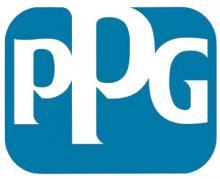
Case studies - Paint and coating
Storage, conveying, dosing of raw materials for the feeding of mashers/dispersers, accurate doses, batch repeatability of recipes and containment for the handling of powders and raw products.
Main powders handled: titanium dioxide (titanium, TiO2), calcium carbonate, (CaCo3), talc, silica, aerosil, barium sulfate, pigment, etc.
Case studies with our customers
Optimizing Sensitive Powder Processing with a Custom Solution
Powders handled:lithium, Lithium, NMC compounds (Nickel, Manganese, Cobalt), and anode/cathode materials (graphite, LiFePO4), requiring secure handling due to their toxicity, hygroscopic properties...
Chemical
Unloading drums of toxic powder
Chemical
Unloading and conveying FIBCs of titanium dioxide for the ink and coatings industry
Chemical
Turnkey solution for bulk bag unloading and vacuum conveying of rheology additives for chemical manufacturing
Chemical
Super sack unloading and mobile IBC docking for powder paint industry
Chemical
Bulk bag discharge station
Chemical
Pneumatic conveyor for mixer feeding
Chemical
Loading of resins and polymers in chemical reactors under pressure in a hazardous rated location
Chemical
Raw material feed and lump breaking of resinous materials
Chemical
IBC unloading of powder paints into bulk bags
Chemical
Process for tanning additives: Feeding a chemical dispersion process from sacks and flexible or rigid containers.
Chemical
Discharge of bulk bags of zinc raw materials into etching tanks
Chemical
Discharge of bags for feeding a mixing tank
Fine chemical
Painting and coating sector
The systems include the installation of hoppers for the storage of materials (carbonate, titanium, talc...) initially stored in bulk trucks. Weighing hoppers (dosing hoppers) installed on scales, ensure the weighing of batches of raw materials to be loaded into the mashers/dispersers. Loading is generally carried out by pneumatic conveying (or screw conveyors) with a throughput of up to 10 t/hr -15 t/hr, and an associated accuracy of -/+ 2kg. The automation of the loading process offers an optimal containment, unlike manual loading of the dispersers. Depending on the production tonnes, the manufacturing lines integrate several dispersers whose powder feeding is centralized on the silos and intermediate storage.






































